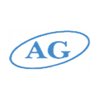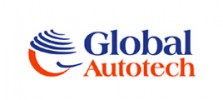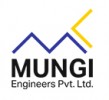Filter interviews by
Bellsonica Auto Component Interview Questions and Answers
15 Interview questions
Spot welding is a process used to join two or more metal sheets by applying heat and pressure at specific points.
Commonly used in automotive manufacturing for joining sheet metal parts.
Involves the use of electrodes to deliver current to the metal surfaces.
Heat generated melts the metal at the contact points, forming a weld.
Typically used for thin materials, such as steel or aluminum.
Example: Spot welding is used ...
Lubrication is the process of applying a lubricant to reduce friction between moving parts.
Lubrication is essential for maintaining the performance and longevity of machinery.
It involves applying a lubricant, such as oil or grease, to surfaces that come into contact with each other.
The lubricant forms a thin film that separates the moving parts, reducing friction and preventing wear and tear.
Lubrication also helps...
A boiler is a device used to heat water or generate steam for various purposes.
Boilers are commonly used in industrial settings to provide heat or power.
They work by burning fuel, such as gas or oil, to heat water and produce steam.
The steam generated by the boiler can be used for heating buildings, powering turbines, or other industrial processes.
Boilers can vary in size and design, from small residential units t...
A conveyor is a mechanical device used to transport materials or goods from one location to another.
Conveyors are commonly used in industries such as manufacturing, mining, and logistics.
They can be powered by electricity, hydraulics, or pneumatics.
Conveyors can be straight or curved, and can have different types of belts or chains to move the materials.
Examples of conveyors include belt conveyors, roller conveyor...
Hydraulics is a branch of science and engineering that deals with the mechanical properties of liquids, especially water.
Hydraulics involves the study of fluid mechanics and the behavior of liquids under pressure.
It is used in various applications such as hydraulic systems in machinery, vehicles, and aircraft.
Hydraulic systems use fluid power to generate, control, and transmit forces and motion.
Examples of hydraul...
Lean manufacturing is a systematic method for minimizing waste within a manufacturing system without sacrificing productivity.
Focuses on eliminating waste in processes such as overproduction, waiting, transportation, extra processing, inventory, motion, and defects
Involves continuous improvement and respect for people
Uses tools like 5S, Kanban, and value stream mapping to streamline operations
Promotes efficiency, ...
5S is a methodology used in companies to improve workplace organization and efficiency.
5S stands for Sort, Set in Order, Shine, Standardize, and Sustain.
Sort involves removing unnecessary items from the workplace.
Set in Order focuses on arranging necessary items in a logical and efficient manner.
Shine refers to cleaning and maintaining the workplace.
Standardize involves creating guidelines and procedures for maint...
A universal testing machine is a device used to test the mechanical properties of materials.
It is commonly used in industries such as manufacturing, construction, and research.
It can measure properties like tensile strength, compression strength, and flexural strength.
The machine applies controlled forces to a specimen and measures the response, allowing for material characterization and quality control.
It consist...
PDI inspection stands for Pre-Delivery Inspection, which is a quality control process conducted before delivering a product or service to the customer.
PDI inspection is a comprehensive check performed to ensure that the product or service meets the required quality standards.
It involves inspecting various aspects such as functionality, performance, appearance, and safety.
PDI inspections are commonly conducted in i...
Panel checking is a quality control process that involves inspecting and verifying the accuracy and functionality of electrical control panels.
Panel checking is performed to ensure that electrical control panels are built correctly and meet the required specifications.
It involves visually inspecting the panel for any physical defects or errors in wiring.
Functional testing is also conducted to ensure that all compo...
Bellsonica Auto Component Interview Experiences
19 interviews found
I appeared for an interview in Dec 2024, where I was asked the following questions.
- Q1. About Dispatch Planning for MSIL
- Q2. Mis reports on Saturday
- Q3. Self introduction and reason for Job change
- Ans.
Experienced Dispatch Incharge with a passion for logistics and a desire for new challenges in a dynamic environment.
Over 5 years of experience in dispatch and logistics management.
Successfully reduced delivery times by 20% through process optimization.
Led a team of 10 in a high-pressure environment, ensuring timely dispatch of goods.
Seeking to leverage my skills in a larger organization with more growth opportunities.
Interview Preparation Tips
- Q1. What is your reason for wanting to leave your current job early?
- Ans.
I'm seeking new challenges and opportunities for growth that my current role can't provide.
Desire for professional growth: I'm looking for a role that offers more opportunities for advancement.
Seeking a better work-life balance: My current job demands long hours, and I'm looking for a position that respects personal time.
Interest in a different industry: I'm passionate about logistics and believe this role aligns more ...
- Q2. Salary negotiation
- Q3. Relocation change
I appeared for an interview in Nov 2024, where I was asked the following questions.
- Q1. What is your DWM.??
- Ans.
DWM stands for Daily Work Management, focusing on efficient task execution and resource allocation in production engineering.
DWM involves planning daily tasks to optimize production flow.
It includes monitoring progress and adjusting resources as needed.
For example, using Gantt charts to visualize task timelines.
DWM helps in identifying bottlenecks and improving overall efficiency.
Regular team meetings can enhance commu...
- Q2. What is the definition of spot welding?
- Ans.
Spot welding is a process used to join two or more metal sheets by applying heat and pressure at specific points.
Commonly used in automotive manufacturing for joining sheet metal parts.
Involves the use of electrodes to deliver current to the metal surfaces.
Heat generated melts the metal at the contact points, forming a weld.
Typically used for thin materials, such as steel or aluminum.
Example: Spot welding is used to as...
I applied via Naukri.com and was interviewed in Dec 2023. There was 1 interview round.
(6 Questions)
- Q1. What is the hydraulic
- Ans.
Hydraulics is a branch of science and engineering that deals with the mechanical properties of liquids, especially water.
Hydraulics involves the study of fluid mechanics and the behavior of liquids under pressure.
It is used in various applications such as hydraulic systems in machinery, vehicles, and aircraft.
Hydraulic systems use fluid power to generate, control, and transmit forces and motion.
Examples of hydraulic co...
- Q2. What is the lubrication
- Ans.
Lubrication is the process of applying a lubricant to reduce friction between moving parts.
Lubrication is essential for maintaining the performance and longevity of machinery.
It involves applying a lubricant, such as oil or grease, to surfaces that come into contact with each other.
The lubricant forms a thin film that separates the moving parts, reducing friction and preventing wear and tear.
Lubrication also helps to d...
- Q3. 1 inch mein kitne micrometer hote Hain
- Q4. Wellcaper ke bare mein poochha
- Q5. What is the conveyor
- Ans.
A conveyor is a mechanical device used to transport materials or goods from one location to another.
Conveyors are commonly used in industries such as manufacturing, mining, and logistics.
They can be powered by electricity, hydraulics, or pneumatics.
Conveyors can be straight or curved, and can have different types of belts or chains to move the materials.
Examples of conveyors include belt conveyors, roller conveyors, an...
- Q6. What is the boiler
- Ans.
A boiler is a device used to heat water or generate steam for various purposes.
Boilers are commonly used in industrial settings to provide heat or power.
They work by burning fuel, such as gas or oil, to heat water and produce steam.
The steam generated by the boiler can be used for heating buildings, powering turbines, or other industrial processes.
Boilers can vary in size and design, from small residential units to lar...
I appeared for an interview in Oct 2024, where I was asked the following questions.
- Q1. SAP knowlege and quality control,kizan
- Q2. Press machine Tandom,TRF
Interview Preparation Tips
I appeared for an interview before Apr 2024, where I was asked the following questions.
- Q1. Crack information
- Q2. Wrinkle thinning
- Q3. Introduction familiar

(5 Questions)
- Q1. What is universal Testing Machine
- Ans.
A universal testing machine is a device used to test the mechanical properties of materials.
It is commonly used in industries such as manufacturing, construction, and research.
It can measure properties like tensile strength, compression strength, and flexural strength.
The machine applies controlled forces to a specimen and measures the response, allowing for material characterization and quality control.
It consists of ...
- Q2. What is panel checking.
- Ans.
Panel checking is a quality control process that involves inspecting and verifying the accuracy and functionality of electrical control panels.
Panel checking is performed to ensure that electrical control panels are built correctly and meet the required specifications.
It involves visually inspecting the panel for any physical defects or errors in wiring.
Functional testing is also conducted to ensure that all components...
- Q3. What is PDI inspection
- Ans.
PDI inspection stands for Pre-Delivery Inspection, which is a quality control process conducted before delivering a product or service to the customer.
PDI inspection is a comprehensive check performed to ensure that the product or service meets the required quality standards.
It involves inspecting various aspects such as functionality, performance, appearance, and safety.
PDI inspections are commonly conducted in indust...
- Q4. What is 5S in Company'?
- Ans.
5S is a methodology used in companies to improve workplace organization and efficiency.
5S stands for Sort, Set in Order, Shine, Standardize, and Sustain.
Sort involves removing unnecessary items from the workplace.
Set in Order focuses on arranging necessary items in a logical and efficient manner.
Shine refers to cleaning and maintaining the workplace.
Standardize involves creating guidelines and procedures for maintainin...
- Q5. What is abnormality sechivatio
- Ans.
Abnormality sechivatio refers to the process of identifying and addressing abnormalities in quality control.
Abnormality sechivatio involves detecting deviations from expected quality standards.
It includes analyzing data, conducting inspections, and implementing corrective actions.
Examples of abnormality sechivatio include identifying defective products, monitoring process variations, and addressing non-conformities.
The...
Interview Preparation Tips
I applied via Naukri.com and was interviewed before Aug 2022. There were 8 interview rounds.

Tell me about your self
Reason for job change
Share idea about company growth
Any project for improvement
Any specific project on repeatative problem or failure
(1 Question)
- Q1. Family background and work profile history
(2 Questions)
- Q1. Any achievement for good work or project
- Q2. Explain your achievement or good work
Interview Preparation Tips
I appeared for an interview before Mar 2024, where I was asked the following questions.
- Q1. Your future plan, what contribution will you make to the company, so that the company can move forward,
- Ans.
I plan to enhance team efficiency and drive innovation to contribute to the company's growth and success.
Implement regular training sessions to upskill team members, improving overall productivity.
Foster a culture of open communication, encouraging team members to share ideas and feedback.
Utilize data analytics to identify areas for improvement and streamline processes, leading to cost savings.
Develop a mentorship prog...
- Q2. How to handle manpower? What is the new way to train a new employee so that the employee can learn it quickly?
- Ans.
Effective manpower management involves strategic training methods for quick employee onboarding.
Utilize a structured onboarding program that includes a mix of shadowing experienced employees and hands-on practice.
Implement e-learning modules that allow new hires to learn at their own pace, such as interactive videos or quizzes.
Encourage mentorship by pairing new employees with seasoned staff for guidance and support du...
I applied via Recruitment Consulltant and was interviewed before Feb 2022. There were 2 interview rounds.

(2 Questions)
- Q1. 1. Press shop production planing, kaizen, spm, 4m change related, iatf system, 5s Type of machine and defect in process.
- Q2. Avrage interview daily routine work question asked by production head.
Interview Preparation Tips
Top trending discussions






Bellsonica Auto Component Interview FAQs
The duration of Bellsonica Auto Component interview process can vary, but typically it takes about less than 2 weeks to complete.
Tell us how to improve this page.
Bellsonica Auto Component Interviews By Designations
- Bellsonica Auto Component Senior Engineer Interview Questions
- Bellsonica Auto Component Assistant Manager Interview Questions
- Bellsonica Auto Component Electrical Maintenance Engineer Interview Questions
- Bellsonica Auto Component Engineer Interview Questions
- Bellsonica Auto Component Line Incharge Interview Questions
- Bellsonica Auto Component Maintenance Technician Interview Questions
- Bellsonica Auto Component Dispatch Manager Interview Questions
- Bellsonica Auto Component Dispatch Incharge Interview Questions
- Show more
Interview Questions for Popular Designations
Overall Interview Experience Rating
based on 14 interview experiences
Difficulty level
Duration
Interview Questions from Similar Companies
Bellsonica Auto Component Reviews and Ratings
based on 304 reviews
Rating in categories
|
Senior Engineer
129
salaries
| ₹4.6 L/yr - ₹8.6 L/yr |
|
Engineer
62
salaries
| ₹2.5 L/yr - ₹6.8 L/yr |
|
Assistant Manager
56
salaries
| ₹8.4 L/yr - ₹12.2 L/yr |
|
Production Engineer
35
salaries
| ₹1.5 L/yr - ₹6.6 L/yr |
|
Junior Engineer
26
salaries
| ₹2 L/yr - ₹4 L/yr |

Ag Industries

Toyoda Gosei Minda

Ralson Tyres Limited

Global Autotech
- Home >
- Interviews >
- Bellsonica Auto Component Interview Questions













